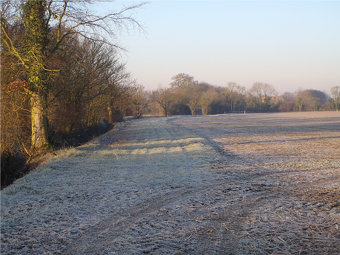 On the face of it, the efforts and the sacrifices made by the UK agricultural industry have been successful in terms of keeping pesticides out of water bodies (typically lakes and rivers). The most recent survey suggests that 99% of water bodies have pesticide levels below the Environmental Quality Standards (EQSs) established as a result of the Water Framework Directive.
On the face of it, the efforts and the sacrifices made by the UK agricultural industry have been successful in terms of keeping pesticides out of water bodies (typically lakes and rivers). The most recent survey suggests that 99% of water bodies have pesticide levels below the Environmental Quality Standards (EQSs) established as a result of the Water Framework Directive.
However, the cost has been high. It includes some key pesticides that have failed to get registration in the UK because they may impact on the water environment. The most notable casualty has been isoproturon. This was not withdrawn because it was being recorded in water. It was withdrawn because it was estimated that it could occur in water at levels that could impact on the water environment at the 1,500 g/ha dose cited in the application for approval. Who knows; at a dose of 1,000 g/ha it might have been approved. Unfortunately, there are other examples of revocations of approvals or authorisations mainly because of the potential impact on the water environment.
But behind the headline of the vast majority of water bodies meeting the chemical standards for pesticides lie more threats to pesticides and their use. Typically, the standards set for drinking water are more stringent than the EQSs. This means that higher standards are required in those areas where drinking water is sourced. However, in the case of metaldehyde and clopryalid, which cannot be removed by current water treatment, it is necessary to meet the drinking water standard in untreated water.
All this means that those who farm in areas where drinking water is sourced will have to make greater efforts to keep pesticides out of water. This may not necessarily mean a two speed agriculture but it could potentially mean the two speed adoption of measures to meet the different standards.
It does not stop there. The interim arrangements for wider aquatic buffer zones are a reflection of increased concern in the UK over spray drift causing short term shocks to the aquatic environment. In this case, thresholds can be exceeded for only a short time but sufficiently long enough to cause damage.
The interim arrangements have been applied whilst there is a full scale evaluation of the issues. There is little doubt that some of the drift data used by regulators in the past do not now reflect the drift from wider sprayers travelling at 12-14 km/hour. Hence, there could be a more general requirement of 20 metre buffer zones for existing as well as new pesticides. I have already heard from one pesticide manufacturer who considers that a new active will have a 20 metre buffer zone and, as a consequence, is questioning whether to bring it to market.
This is an area that really worries me. Are we getting the balance between food production and environmental concerns right?
In this particular case, what bothers me is that the regulators may be trying to protect aquatic environments that, in reality, do not exist. Do most field side ditches have water in them long enough so that many of the organisms that regulators are trying to protect can flourish or even exist?
The French have adopted a system where they only buffer larger streams and water courses rather than every field side ditch. To me, this sounds more realistic. I know that this can lead to issues of what is a water course. The French have resolved this problem by saying that only streams that appear on a certain scale of map need to be buffered.
There needs to be an intensification of the debate on priorities for the countryside. We need to determine what we are trying to protect. It comes down to the old argument that food production, by definition, is environmentally harmful. Trying to establish unrealistic environmental standards will inevitably mean that UK food production will be reduced. It might be argued that additional environmental harm may be caused by asking others to meet this shortfall. We need a more balanced debate.
